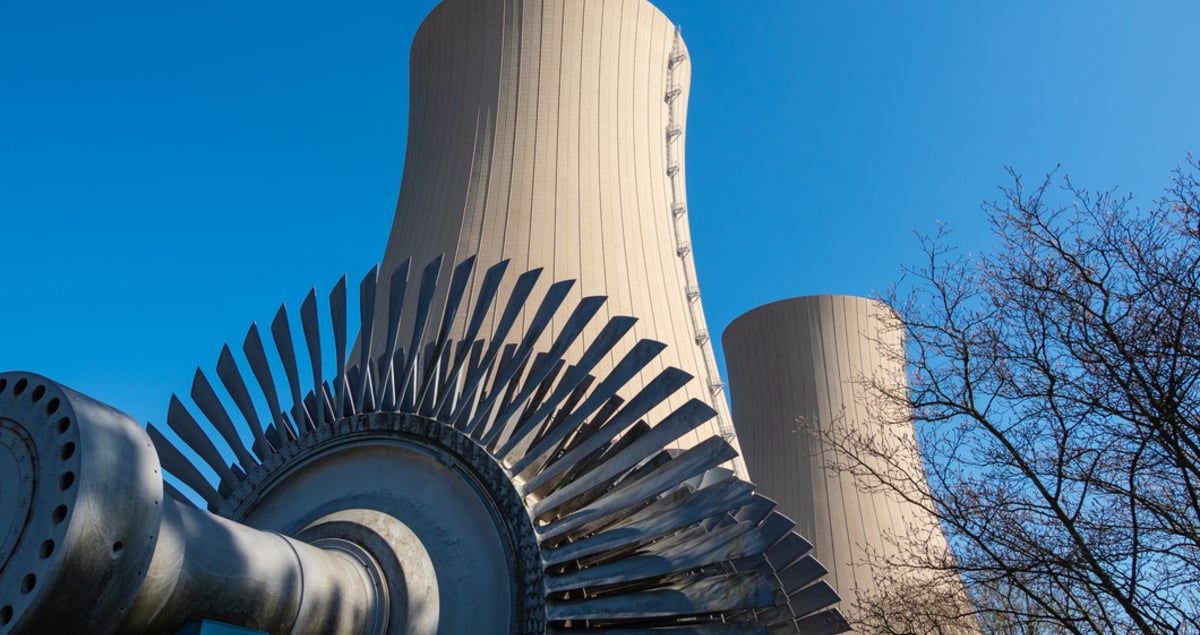What is the Energy Transition and why does it matter?

‘Energy Transition’. Some might say this is a rather tame description of the fundamental changes currently taking place in the energy sector.
The Germans have a better phrase for it: ‘Energiewende’. ‘Wenden’ is the verb used for decisive changes of direction, like turning your car around on the road.
As such, Energiewende implies that the energy transition is a U-turn away from fossil-fueled power toward renewable and other clean forms of energy.
Such language matters, considering that power generation is the largest emitter of carbon dioxide (CO2) in the world.
The Paris Agreement aims to reach net zero emissions by 2050 to keep global warming to well below 2°C and preferably less than 1.5°C above pre-industrial levels.
We have already seen an increase in climate-related natural disasters − rising sea levels, wildfires, hurricanes, severe storms, drought and floods. The number of these will only increase if we can’t keep global temperatures in check.
The UN Climate Change Conference (COP26) scheduled for November 2021 could be a key moment in getting the planet on the right track to meet the Paris Agreement − and the Energiewende will be central to those efforts.

Why do we need an energy transition?
The energy transition refers to much more than power generation. Yes, it includes the sector’s shift from burning fossil fuels − oil, coal, natural gas – to generate electricity, to using renewable resources such as wind, solar, hydro or geothermal energy. But the wider goal is to cut CO2 emissions across the board while developing energy storage and electrifying major industry and transportation systems. Low-carbon or carbon-free fuels such as hydrogen are being promoted as long-term solutions for these challenges.
The path to decarbonizing energy has achieved significant milestones over the past decade. Among the highlights is the ascent of wind power in Europe, which has helped reduce the cost of renewable energy and made the industry self-sustaining, setting a model for the world. The US, Asia Pacific and Africa will be in the next wave of wind’s success.
In 2020, renewables exceeded the share of fossil fuels for the first time in the EU energy mix, and the European Commission estimated the carbon footprint of the power sector had dropped by 14% in 2020 − albeit due to exceptional circumstances.
China and the US − which is aiming to reach 100% carbon pollution-free electricity by 2035 − are both expected to see an increase in capacity additions in 2020 and 2021 compared with 2019, according to the International Energy Agency (IEA).
Renewables are also set to play a leading role in meeting Africa’s growing demand, with the IEA predicting double-digit growth from both utility-scale and distributed solar energy and other renewables.
But there is still much more to do to achieve carbon neutrality, not just to raise the share of renewables in the energy mix, but to decarbonize existing energy infrastructure and to further emission reductions by the heaviest users of fossil fuels.

What needs to happen to get closer to net zero?
In many ways, the energy sector is facing an ‘energy trilemma’: providing an energy mix that is stable, affordable and sustainable.
In the first instance, this means meeting the world’s ever-growing energy needs – set to expand by 4.6% in 2021.
It is clear that renewables – which made up almost 90% of the increase in total power capacity worldwide last year – need to be adopted at a much greater scale.
This includes growing the market for renewably generated, carbon-free hydrogen, bioenergy (electricity from biomass) and other alternative fuels, and scaling the underlying technologies to compete with fossil fuels both in terms of capacity and cost.
In turn, alternative fuels will enable heavy emitters in industry to decarbonize effectively. Steel and cement manufacturers will be among the sectors to adopt alternative fuels. The heavy shipping industry will also benefit from new sources of energy.
Another challenge is balancing out the peaks and troughs of renewable energy supplies. To do so, we need to be able to store excess renewable electricity and release it at times of peak demand. The onus is on both the power sector and policymakers to ensure that energy storage solutions are commercialized and scaled rapidly.
These include batteries but also ‘power-to-X’ technologies that use the excess electricity produced to make hydrogen, ammonia, synthetic fuels and other chemicals, for example.
And despite the challenges associated with it, nuclear energy also needs to be considered as a way of providing clean and stable baseload power in the energy mix. Initially, this will still rely on fission reactors, with the IEA describing traditional nuclear as an essential foundation for the energy transition in its Net Zero by 2050 report. Over the long term, the ambition is for nuclear fusion − which is inherently safer − to join the energy mix. While there are numerous demonstration projects underway, the earliest we might see a commercial fusion reactor could be in the 2030s. But realistically, large-scale fusion reactors are not expected to contribute energy to the grid until after 2050.
How can we capture carbon and use it?
Where a swift transition to carbon-free fuels is not possible, carbon emissions can be managed by deploying solutions such as Carbon Capture, Utilization and Storage (CCUS).
This may apply to some heavy industries and transportation such as shipping, where carbon could be captured at sea, then stored or used in various industrial applications on land, including the production of synthetic fuels.
Another example is in power generation. Mitsubishi Heavy Industries Engineering (MHIENG) have signed a long-term contract for a bioenergy power plant in the UK to use MHIENG’s carbon capture systems. This will constitute the largest deployment of negative emissions technology in power generation in the world. It will support the UK government’s ambitious target to reduce carbon emissions.
In the US, Next Decade is working with MHI America and others on Rio Grande LNG, which could be one of the largest carbon capture and storage projects in North America, sequestering CO2 from the Liquefied Natural Gas process in the port of Brownsville, Texas. The project is expected to enable the capture and permanent geologic storage of more than five million metric tons of CO2 per year.
A bigger challenge still is removing CO2 that already exists in our atmosphere. Direct Air Capture (DAC) technology can be one route toward slowing or even reversing emissions. While DAC has been used for a long time to purify the air in submarines, its use for filtering out carbon from the atmosphere is still in its infancy.
But by far the biggest filters for CO2 are our woodlands. And yet, between 1990 and 2020, the world lost 178 million hectares of forest, an area about the size of Libya. According to research, there is potential for an area the size of the US to be reforested. While trees on their own cannot absorb growing amounts of carbon, they are still another key pathway on the road to a carbon-neutral world.
What can COP26 achieve?
Clearly, there is no silver bullet to get the world to below 2°C by 2050 − and the current trajectory is still too slow to stop the vicious cycle of rising temperatures and climate change.
A concerted effort will be needed by all stakeholders to rein in climate change with more ambitious policies and initiatives to reach that target.
The UN Climate Conference, COP26, in Glasgow in November 2021, could provide the impetus needed for all key players – policymakers, industry, NGOs, energy and technology companies – to come together and consolidate their efforts to move more decisively towards the 2050 net zero target. The result could be a much more action-driven approach – that might just result in the Energiewende the world needs.
Learn how to tackle CO2 and achieve net zeroDownload MHI Group's free whitepaper.





